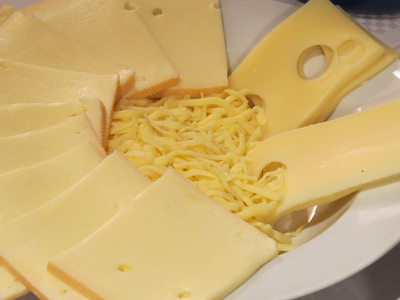Cheese has a special place in the hearts of people as it has a great ability to enhance the deliciousness and sumptuousness of food. Whether sprinkled above the chicken-grilled sandwich or inserted into the pizza base, cheese enhances the flavor of any dish, making it savory, sinful, and delightful. For people wanting to treat their taste buds, including extra cheese in the food is not an option; it is a preference. From tangy flavor to creamy texture, there is a cheese for satiating every type of taste. There is a separate fan base for cheese cubes.
In recent years, cheese producers have brought innovations in cheese-making processes, flavor, packaging, and storage. These innovative techniques have brought significant transformations in the global cheese industry. According to the research published by Next Move Strategy Consulting, the global cheese market is estimated to generate USD 192.55 billion by 2030. The following are some of the trends ongoing in the market. Let us explore the latest innovations in cheese.
Using different sources for producing cheese
Cheese producers are exploring different milk sources besides traditional cow’s milk. These milk sources include milk from sheep, goats, and other animals such as camel. Producers utilize goat’s milk for producing cheese as it has smaller fat molecules. So this characteristic makes it easier to digest as compared to cheese made from cow’s milk. The cheese made from sheep’s milk has a higher calcium content as compared to cheese made from cow’s milk. However, it has higher lactose content. So, it is not preferable for lactose intolerant people. Consumers prefer cheese products based on their needs. Therefore, cheese producers will continue to explore different types of milk to cater to different needs.
Implementing technology to produce cheese under favorable conditions
Scientists are utilizing various monitoring technologies to ensure the high quality of cheese. They are implementing sensors and detectors to ensure the optimum quality of cheese under favorable conditions. They monitor humidity, pH, and temperature to make sure that the cheese has a consistent quality. Scientists from the University of Kentucky in Lexington, the University College Dublin, and the Moorepark Food Research Centre developed an optical sensor for monitoring cheese online and in real-time. This sensor measures the backscattered light during the coagulation of milk and the production of liquid whey and curd that will become cheese. They highlighted that the online monitoring of the coagulation of milk and other processes helps in determining the variations and compensating them instantly to maintain consistency in moisture level and texture. This, in turn, will benefit in producing a consistent cheese grading.
Utilizing innovative ingredients for producing cheese
Cheese producers are implementing innovative ingredients for producing innovative flavors of cheese. With the varying needs and taste preferences of consumers, they are exploring different ways to incorporate flavors in cheese. They add fruits, spices, and herbs to create unique flavors. One of the innovative and exciting offerings for health-conscious people is blueberry cheddar cheese. It has the sweetness and creamy texture of blueberries while containing low carbs and high protein content. Such an offering makes it appealing to health- and fitness-conscious consumers. Other types of cheeses may include mango cheddar cheese or cheese made with beer to develop unique and delicious flavors. More and more flavors will come into the picture as producers try to cater to the demands of consumers.
Adopting innovative technology for aging cheese
Cheese producers are utilizing innovative technologies and techniques for aging cheese. Traditionally, cheese was aged in cellars or caves to develop flavor and high-quality products for weeks and months. However, producers and researchers are experimenting and using the method known as high-pressure processing (HPP). Researchers from the University of Campinas (UNICAMP) and the University of Viçosa (UFV) studied the physiochemical, microstructural, and microbiological characteristics of cheese using the HPP technique. They found that this method is as effective in aging cheese rapidly as traditional aging methods. Furthermore, HP-processed cheese improves the shelf life of products. Such innovative methods will continue to emerge in the coming years.
Using sustainable materials for packaging the cheese
As consumers are becoming increasingly aware of the environmental impact of the products and packaging they use, cheese producers are moving toward using sustainable materials for producing their packages. Such products reduce the impact on the environment by reducing carbon emissions. Harpack-ULMA Packaging introduced vacuum skin packaging that uses thinner materials for packaging and enhances the shelf-life of cheese products. The company also utilizes recyclable plastic, renewable materials, and innovative materials such as thermoformer to produce cheese product packaging. More and more companies will introduce innovative packaging products, and cheese producers will join hands with them to cater to consumers’ eco-friendly packaging demands.
Cheese producers, researchers, and scientists will continue to innovate cheese in the coming years. They will introduce new technologies and techniques to address the needs of this widely-popular food product. From utilizing different sources and ingredients for producing milk to adopting new cutting-edge technologies and packaging, there will always be innovations in the cheese industry. There will be new flavors, thinner packaging, unique texture, and innovative aging technology launched in the next few years. Let us spare a moment to appreciate the innovative methods and techniques utilized for producing a cube or slice of cheese before savoring every bit of it wholeheartedly.
*
Wondering about how each country determines the price of milk to farmers? Check out Milk Pricing: Approaches around the World.
- Savor the cheese: Recent innovations and Developments in this Delightful Food - May 21, 2023
- 5 Magazine Subscriptions for Rural Green Thumbs - June 22, 2022

